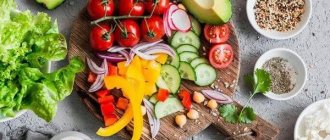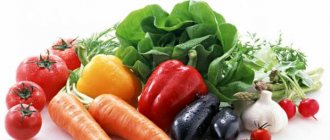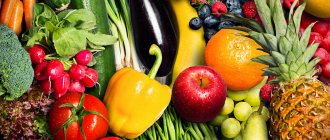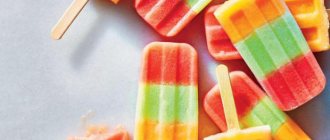Definition of concepts
In the 90s of the 20th century, a full-scale study was conducted aimed at determining the insulin index of products, the relationship between dietary nutrition and the body weight of the subjects.
During the experiments, portions of foods with a calorie content of 240 kcal were taken and compared with white bread. By default, its index is taken as 100% - the reference unit. As a result, the study found that even with the same amount of carbohydrates, there is a difference between the glycemic and insulin indices. In some cases, the insulin index exceeds the glycemic level.
Studies have shown that foods with a low glycemic index can trigger increased insulin production. And this provokes obesity, so you should not use them when losing weight.
You need to understand how the glycemic index differs from insulin. The first indicator reflects the process of insulin synthesis by beta cells: it occurs spasmodically. The production of insulin allows you to reduce the concentration of sugar, but at the same time the fat burning process stops.
The second indicator shows how the insulin content changes when consuming foods. It shows how quickly carbohydrates enter the bloodstream, which bring glucose, which is converted into sugar, and how the pancreas reacts to them. After all, some low-carb foods stimulate increased insulin production.
Insulin index of meat products
The GI theory, in principle, does not consider foods rich in fats and proteins unless they contain carbohydrates. It is generally accepted that they do not affect blood sugar levels, which means they have a zero glycemic index. But a number of studies have shown that meat and even fish can increase glucose levels, that is, have a formal GI value. At the same time, the value of their AI turns out to be even higher. Where does this discrepancy come from? The reason is that our body can convert some amino acids (valine, methionine, histidine), the source of which is protein foods, into glucose. With this conversion, a special form of glucose is formed (the so-called non-carbohydrate), which is deposited mainly in the liver, muscles and renal cortex. It is the process of such glucosynthesis that is taken as the basis for the keto diet and a carbohydrate-free nutrition system aimed at fat burning.
Menu
An approximate healthy menu for high insulin levels:
- Breakfast: oatmeal with water without sugar, half a glass of seasonal or thawed berries, 150 g of cottage cheese.
- Second breakfast: Citrus fruit.
- Lunch: 120-150 g of lean meat or sea fish, vegetable salad, use olive or linseed oil for dressing.
- Afternoon snack: Green apple.
- Dinner: 120-150 g of stewed meat or fish, a portion of vegetables, olive or flaxseed oil for dressing, parsley, dill, celery or lettuce, a portion of brown or brown rice.
- Second dinner: 30-50 grams of almonds, walnuts.
Interesting article: Foods that lower blood sugar
Menu for low insulin:
- Breakfast: soft-boiled egg, carrot cutlets.
- Second breakfast: porridge with water, bread, dried fruit compote without sugar.
- Lunch: vegetable soup, 120-150 g of lean meat, bread.
- Afternoon snack: yogurt without sugar or fillers.
- Dinner: cottage cheese casserole with candied fruits, green tea with low-fat milk.
- Second dinner: kefir.
Interesting article: Blood glucose levels: normal after meals and foods that lower and increase readings
- Endogenous insulin
Glycemic and insulin indices of dairy products
Anyone who wants to lose excess weight or suffers from diabetes is interested not only in why the insulin index of foods should be taken into account on a diet, but also why the indices of dairy products are so different. Let us remember that their GI is within 30 units, and their AI exceeds 100. Dairy products are not able to sharply increase glycemia, but at the same time actively stimulate insulin synthesis.
As a result, the efficiency of the enzyme necessary for the breakdown of fats is suppressed. This leads to the body increasing the amount of adipose tissue. If you were sure that by eating a lot of cottage cheese (after all, we are constantly told that this is a dietary product), you can get rid of excess weight, then you are deeply mistaken.
What is the insulin index of products? How does the insulin index affect fat storage? Why is the insulin index of cottage cheese the No. 1 topic of discussion among athletes and lovers of all dairy products? Since I myself am a big fan of cottage cheese, I devoted a very long time to studying this issue...
And after analyzing a bunch of articles, scientific publications and studies, as well as performing my own experiment on my body, I was able to draw certain conclusions based on personal observations. Today I will tell you about them, but let’s start in order, namely with the definition of the insulin index.
The insulin index is a value that shows how much insulin is released into the blood when certain foods are consumed. But today, as you guessed, we will talk exclusively about the insulin index of dairy products, in particular cottage cheese, beloved by many.
Everyone knows the concept of the glycemic index of foods. In simple words, this is an indicator of the effect of food on blood sugar levels. The higher the GI of foods, the FASTER the blood sugar level will rise, and the FASTER the pancreas will react by releasing large amounts of the hormone insulin, the task of which is to process glucose into glycogen or store it as fat.
The insulin index is slightly different from the glycemic index. Here the pattern of insulin release into the blood is completely different. The fact is that the pancreas responds by releasing insulin not only to foods rich in carbohydrates, but also to other foods.
This suggests that insulin levels also rise after eating protein foods, such as fish, meat, cottage cheese, nuts, etc., but the reaction occurs not to the carbohydrates in these foods, but to something else.
The most interesting thing is that not all foods have the same glycemic and insulin index. Quite often, the glycemic index of foods and their insulin index do not match!
So, for example, the GI of apples is 30, and their AI is 59, the GI of white rice is 65, and the AI is 79, the GI of boiled beans is 40, and its AI is 120!!! That is, it turns out that blood sugar level is not the only indicator of the release of the hormone insulin. Its level can increase without a significant increase in glucose! And a good example of this is ALL DAIRY PRODUCTS!
Insulin index and dairy products
Let's use cottage cheese as an example to find out what its glycemic and insulin index are, and how this fact affects weight loss?
The glycemic index of low-fat cottage cheese is quite low - only 30, and the insulin index of cottage cheese is around 120.
As you can see, the difference is colossal. Despite the fact that cottage cheese does not raise blood sugar levels, the pancreas instantly reacts to the entry of cottage cheese into the body and releases a large amount of insulin.
"So what? - you ask, - let him throw away this insulin for his health. What's in it for us?"
Here's what.
That is, it turns out that by consuming foods with a high insulin index (even if their GI is very low, like low-fat cottage cheese), you stimulate a powerful release of insulin and thereby completely deprive your body of the ability to burn fat deposits!
I know that it’s hard to believe in all this, because I can’t wrap my head around why cottage cheese with a carbohydrate content of 1.2 g per 100 g of product, with a glycemic index of 30 units, without increasing blood sugar levels, still STIMULATES THE MOST POWERFUL INSULIN RELEASE??? In fact, scientists from all over the world still cannot answer this question unanimously.
In general, be that as it may, the fact remains: all dairy products, except cheese, have a high insulin index. Many scientists have come to this conclusion based on scientific research and laboratory experiments.
Adding milk or any milk (cottage cheese, yogurt, kefir) to foods with a low glycemic index turns them into foods with a high GI. Therefore, I advise all those who like to eat oatmeal with milk for breakfast to think twice: after adding milk, rolled oats with a low GI immediately turns into porridge with a high GI.
And once in the body, the complex carbohydrates contained in rolled oats, in combination with milk, turn into simple carbohydrates, which significantly increase blood sugar levels, and then you know what happens... This is the paradox.
Cottage cheese and water retention
Absolutely all dairy products provoke an increase in the amount of the hormone in the blood. Let's consider the reasons and tactics of action.
Milk protein produces a negligible insulin response compared to other proteins. Studies of type II diabetics have shown that when whey protein was included in the diet, the insulin response increased by up to 55% and the glucose response decreased by 20%. And other studies showed that eating 0.4 liters of bread with milk gave an increase of 65%, while glucose did not change.
The same study showed that adding 0.4 liters of milk to pasta increased insulin levels by 300%, but there was no change in glucose levels. Milk causes a sharp and significant increase in insulin levels in the blood.
When dairy products are added to low GI foods, they become high GI foods. Milk GI is 30, low, but AI is 90, high.
Science cannot fully understand what causes this reaction to milk, but there are several basic theories:
- Lactose. It greatly increases insulin levels. However, this cannot explain all observations.
- Milk protein. An increase in insulin levels is facilitated by the breakdown product of casein, the so-called casomorphins.
- Small peptides that are found in milk in huge quantities and have a hormone-like effect. Scientists believe that it is peptides that have an effect on the human body. Most of it has a positive effect, but some of it helps to increase insulin levels in the blood.
Thanks to research, it was possible to establish that there is a product that does not affect the increase in insulin, and this product turned out to be cheese. All other dairy products provoke a sharp release of insulin. When the level of carbohydrates is unstable, glucose fluctuates, and a person begins to experience lethargy, loss of strength, craving sweets to increase glucose and restore strength.
Table
Products containing insulin index (II) are divided into three categories.
These categories are: low AI content (buckwheat, eggs, oats), medium AI content (lean meat, any fish), high AI content (milk, potatoes, baked goods and unnatural yoghurts).
| Name | AI content |
| sucking candy | 160 |
| Chocolate bars “Mars”, “Snickers”, etc. | 122 |
| Potato | 121 |
| Canned beans | 120 |
| Yogurt with fillings | 115 |
| Dates | 110 |
| Beer drinks | 108 |
| White or gray bread | 100 |
| Sour milk | 98 |
| Black bread | 96 |
| Cracker | 92 |
| Cow's milk | 90 |
| Ice cream | 89 |
| Cupcakes, pastries, grapes, watermelon | 82 |
| Bananas | 81 |
| Boiled rice | 79 |
| Corn | 75 |
| Donuts, French fries | 74 |
| Brown, red, brown rice | 62 |
| Chips | 61 |
| Oranges | 60 |
| Seafood, apples | 59 |
| Yeast-free bread | 56 |
| Popcorn | 54 |
| Beef, veal | 51 |
| Products with added lactose | 50 |
| Cheeses | 45 |
| Pasta | 40 |
| Chicken eggs | 31 |
| Grapefruit, cherry, pearl barley, lentils of any variety, natural chocolate | 22 |
| Peanuts, apricots, legumes | 20 |
| Broccoli and regular cabbage, boiled mushrooms, onions, peppers, eggplants, tomatoes, lettuce | 10 |
| Sunflower seed | 8 |
Interesting article: Proper diet and treatment of diabetes mellitus type 1 and 2
Table of GI and AI content in products
When referring to food glycemic index lists, it should be understood that the indicators in them represent nothing more than average data. Depending on a whole list of factors, these figures can vary within a fairly wide numerical range - from 5 to 30%.
- To find out the GI, you usually take a serving that contains approximately 50 g of pure carbohydrates. While the insulin index in products is calculated for a portion whose energy value corresponds to 1000 kJ (approximately 240 kcal).
- It has an impact on the insulin index, as well as the body’s reaction to eating foods in the form of changes in insulin production and food intake conditions, for example, on an empty stomach. The developers of this theory believe that in reality the figure may differ slightly (as in the case of GI), but still differ.
- Another factor influencing the synthesis of the hormone insulin is the physical shape a person is in. Below is a reference table that lists foods with their corresponding glycemic and insulin index values.
In controlling the diet for the purpose of treatment, as well as prevention of diseases associated with metabolic disorders, hormone synthesis and a number of other problems, or rational weight loss, one should not forget about additional helpers. If you find it a real problem to limit yourself or give up almost completely foods with high glycemic and insulin indices, pay attention to Herbalife Yellow Tablets. The composition of the supplement, consisting of active substances such as chromium and Garcinia Cambogia extract, reduces cravings for sweets and snacks, which are increasingly some kind of not healthy carbohydrate snack on the run.
Is it possible to include butter in the diet?
High-quality butter is a healthy product. It contains phospholipids, calcium, vitamins and amino acids. If you have diabetes, you have to limit your consumption of this product, since it is high in saturated fatty acids and cholesterol.
Unlike fast carbohydrates, the body cannot do without fats, because they are vital. That is why the use of butter is allowed, but in small quantities. The consumption rate is 10–15 g per day.
Important. For diabetes, it is still better to give preference to olive, sesame and flaxseed oil. They have a positive effect on the functioning of the cardiovascular system and regulate blood sugar levels.
When is the best time to use such products?
If you have diabetes , try not to consume dairy products before bed, as your blood glucose levels will be high in the morning.
It is best for diabetics to include dairy products in their diet in the morning or before physical activity. In this case, insulin will not accumulate fat mass, but will convert all glucose into energy.
If you have diabetes, try to take dairy products seriously, as they significantly increase insulin levels. Contact your doctor and work with him on a detailed menu that includes the amount of dairy products acceptable for your body. This will help keep your sugar levels normal, will not lead to obesity and will have a positive effect on heart health.
Useful tips for diabetics
When the pancreas is damaged, it is important not only to know the GI and AI levels for certain foods, but also to remember the principles of nutrition. Endocrinologists and nutritionists insist on the importance of diet in the second and first types of pathology.
Even with daily insulin injections, we must not forget about calorie content, bread units, glycemic and insulin index. Only with self-discipline can a patient count on a fairly good level of health against the background of chronic pathology.
Five important rules:
- Refuse or rarely consume in limited quantities items with high GI and AI values.
- Maintain the norm of bread units in case of insulin-dependent diabetes.
- All products that can be consumed without heat treatment without harm to health should be obtained fresh.
- Eat more vegetables: the insulin index is lower than that of fish, meat and dairy products.
- Steam, avoid fried foods, do not consume fast food and concentrates from sachets.
It is important to follow the principles of proper nutrition for diabetes mellitus, to take into account AI and GI when preparing a diet, especially for patients with an insulin-dependent form of the disease. The best option is to periodically consult with a nutritionist, monitor blood sugar values, and adjust the insulin dose if daily injections are necessary, taking into account important indicators characterizing foods. A complete table of the insulin index will be useful when choosing a menu for weight loss. Useful data should always be at hand for patients with insulin-dependent diabetes mellitus.
Find out more useful information about what the insulin index of food products is and why it is needed in the following video:










